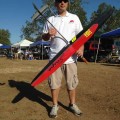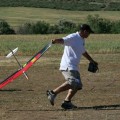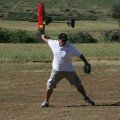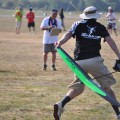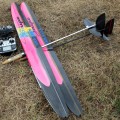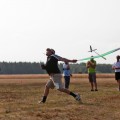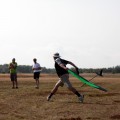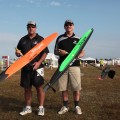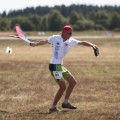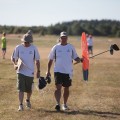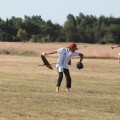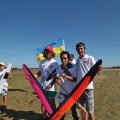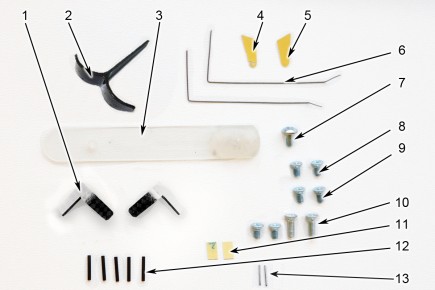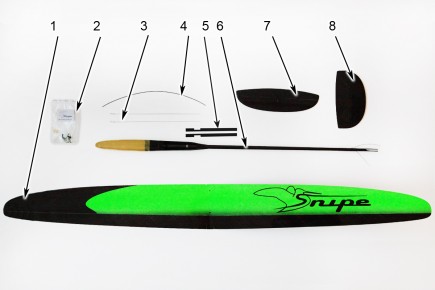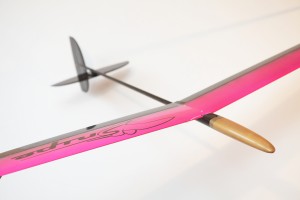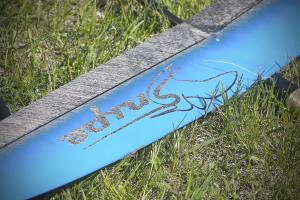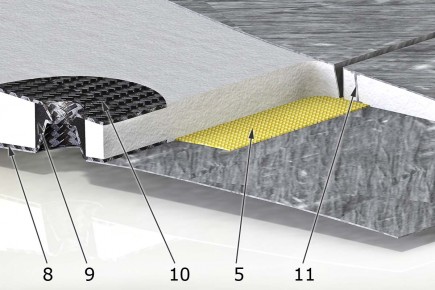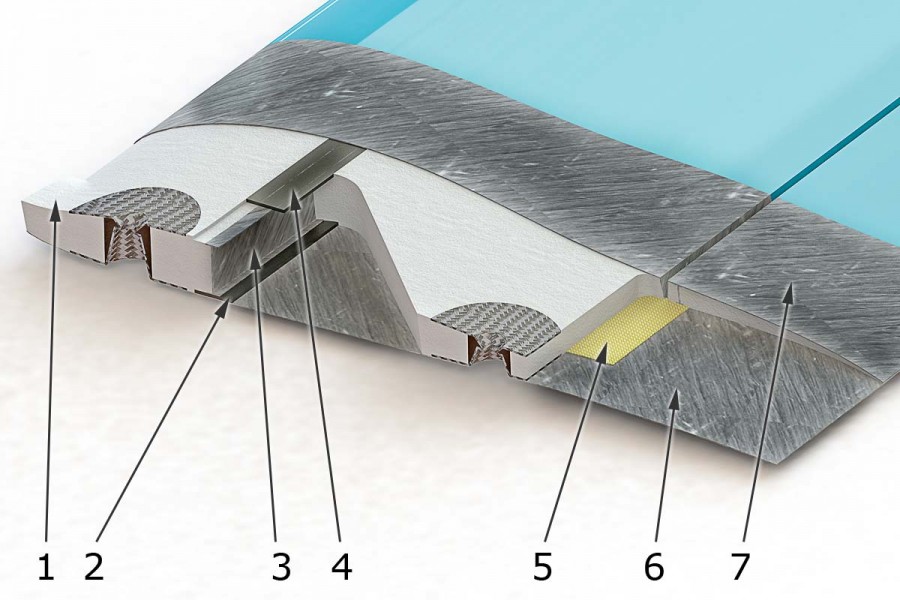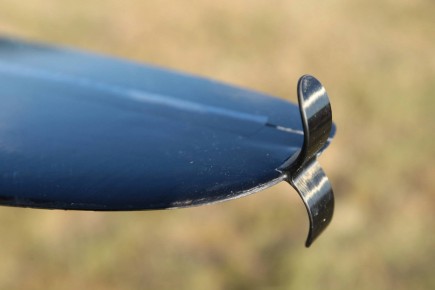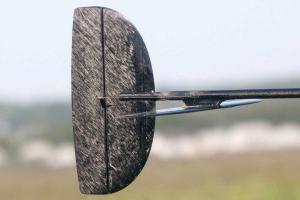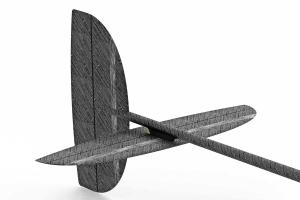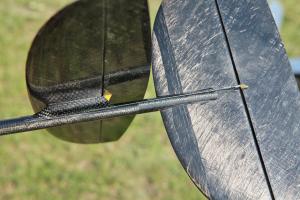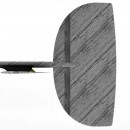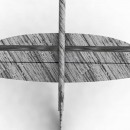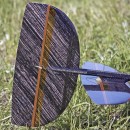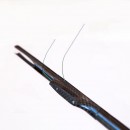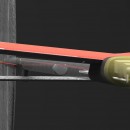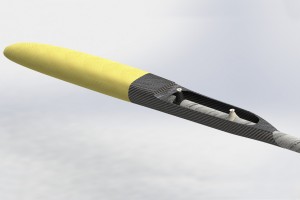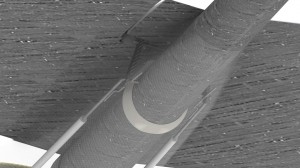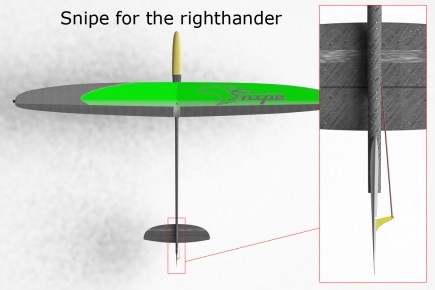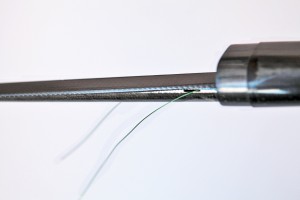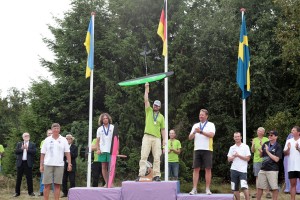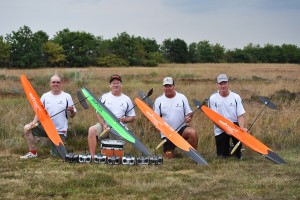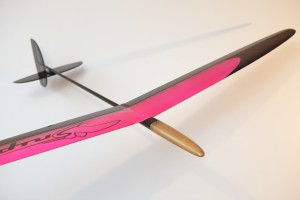You can download a PDF file with templates for setting different flight phases (modes).
![]() Snipe. Recommendations for assembly
Snipe. Recommendations for assembly
![]() Snipe ailerons settings template
Snipe ailerons settings template
(NOTE: to print the file in the correct scale, the scale settings for printing, select "None").
Contents of Snipе kit
Contents of accessories kit:
-
Wing control horn;
-
Launching peg;
-
PP clamp for ballast;
-
Stabilizer control horn;
-
Rudder control horn;
-
Torsion spring;
-
Screw for fixing PP clamp for ballast (M3);
-
Screws for fixing stabilizer (2 pcs);
-
Spare screws for fixing stabilizer (2 pcs);
-
Set of screws for fixing of the wing М3х6 и М3х10 (1 spare set);
-
Cover plate for the wing horn;
-
Pipes for the closing control cables;
-
Wing horn shafts.
Contents of part kit:
-
Wing;
-
Contents of accessoires Snipe kit;
-
Aileron pushrods;
-
Bowden tubes for pushrods;
-
Reinforcement plates for aileron rods;
-
Fuselage with nose cone;
-
Stabilizer;
-
Vertical stabilizer.
| Equipment arrangement | Nose ballast for CG 64 mm | CG without nose/tail ballast | |||||||
| Position # in the picture | 1 | 2 | 3 | 4 | 5 | 6 | 7 | ||
| Equipment combinations | D47 | D47 | JR 285MG | JR 285MG | Reciver | Li-Po 600mAh | - | 0 | 64 mm |
| MKS DS75K | MKS DS75K | MKS DS75K | MKS DS75K | Li-Po 600mAh | Reciver | - | 0 | 64 mm | |
| Reciver | MKS DS75K | MKS DS75K | JR 285MG | JR 285MG | Li-Po 600mAh | - | 0 | 64 mm | |
| Reciver | KST X08 | KST X08 | JR 285MG | JR 285MG | Li-Po 600mAh | - | 0 | 64 mm | |
| KST X08 | KST X08 | KST X08 | KST X08 | Reciver | Li-Po 600mAh | - | 0 | 64 mm | |
| KST X08 | KST X08 | D47 | D47 | Li-Po 600mAh | Reciverr | - | 0 | 64 mm | |
| D47 | D47 | Li-Po 600mAh | KST X08 | KST X08 | Reciver | - | 0 | 64 mm | |
| MKS DS75K | MKS DS75K | KST X08 | KST X08 | Reciver | Li-Po 600mAh | - | 0 | 64 mm | |
| MKS DS75K | MKS DS75K | MKS DS75K | MKS DS75K | Reciver | - | Li-Po 300mAh | 0 | 64 mm | |
| KST X08 | KST X08 | KST X08 | KST X08 | Reciver | - | Li-Po 300mAh | 0 | 64 mm | |
| D47 | D47 | Li-Po 600mAh | MKS DS75K | MKS DS75K | Reciver | - | 2 | 65 mm | |
| Reciver | JR 285MG | JR 285MG | D47 | D47 | Li-Po 600mAh | - | 2 | 65 mm | |
| Reciver | JR 285MG | JR 285MG | JR 285MG | JR 285MG | Li-Po 600mAh | - | 0 (+1.5gr to the tail) | 60 mm | |
| Parts weight | ||
| JR 285MG | 12 gr | |
| MKS DS75K | 7.5 gr | |
| KST X08 | 8 gr | |
| Diamond D47 | 4.7 gr | |
| Reciver | 5.5-6.5 gr | |
| Tail | 12.8 gr | |
| Li-Po 600 mAh | 20 gr | |
| Li-Po 300 mAh | 9.5 gr | |
 BLASTER 3/SNIPE Ballast 60g
BLASTER 3/SNIPE Ballast 60g
 BLASTER 3/SNIPE Ballast 85g
BLASTER 3/SNIPE Ballast 85g
 SNIPE Protection Bag
SNIPE Protection Bag
|
Technical data of Snipe DLG |
||||||
|
Click on the model name to paint it |
||||||
|
Aerodynamic parameters * |
||||||
|
Length |
1086 mm (42,75 inch) |
|||||
|
Wing span |
1490 mm (58.66 inch) |
|||||
|
Wing area |
19.65 dm² (304.6 sq in) |
|||||
|
Wing airfoils |
originally from Joe Wurtz |
|||||
|
Wing aspect ratio |
11,3 |
|||||
|
Stabilizer area |
2,14 sq dm (33.17 sq in) |
|||||
|
Stabilizer airfoils |
originally from Joe Wurtz |
|||||
|
Stabilizer aspect ratio |
1,42 |
|||||
|
Vertical Stabilizer area |
2 sq dm (31 sq in) |
|||||
|
Vertical Stabilizer airfoils |
originally from Joe Wurtz |
|||||
|
Vertical Stabilizer aspect ratio |
1,08 |
|||||
|
Control surfaces |
Ailerons (flaps), rudder, elevator |
|||||
|
Weight characteristics ** |
||||||
|
Fuselage weight |
32.5 gr (1.15 oz) |
|||||
|
Nose cone |
7.3 gr (0.26 oz) |
|||||
|
Aileron pushrods, bowden pushrods, reinforcement plates for aileron rods |
6.4 gr (0.22 oz) |
|||||
|
Weight of the wing |
91-98 gr (3.2 - 3.45 oz) |
101-110 gr (3.56 – 3.88 oz) |
115-125 gr (4.06 - 4.41 oz)
|
|||
|
Weight of the horizontal stabilizer |
5,5-6,2 gr (0.19 - 0.22 oz) |
|||||
|
Weight of the rudder |
5,8 – 6,2 gr (0.2 - 0.22 oz) |
|||||
|
Details like screws, crevices |
8 gr (0.28 oz) |
|||||
|
NT model weight |
156.5 - 164.6 gr (5.52 - 5.8 oz) |
166.5 - 176.5 gr (5.87 - 6.2 oz) | 180.5 - 191.6 gr (6.37- 6.76 oz) | |||
|
All Up Weight * |
207 - 229 gr (7.3 - 8.1 oz) |
218.5 - 247 gr (7.7 - 8.7 oz) |
230 - 262 gr (8.11 - 9.24 oz) | |||
|
Wing loading ( g/dm²) * |
10.53 - 11.65 gr\dm² |
11.2 - 12.6 gr/ dm²
|
11.7 - 13.3 gr/ dm² | |||
|
Price, EUR |
680,00 € |
680,00 € |
680,00 € |
680,00 €
|
702,69 € |
702,69 € |
* - typical value shown; the actual values depend on the radio gear used;
** - weight of the components depends on the color and the presence of stripes. Dark colors lighter, yellow is the heaviest.
Wing
Joe Wurtz had worked for many years to obtain the perfect DLG wing aerodynamics and came to the conclusion thatthe use of thin profiles is needed, especially for the aileron part of the wing. Analysis of the traditional sandwich and even unitized constructions showed that such wing is not enough rigid and durable. Completely new solution was required.
We managed to integrate the carbon I-sidewalls into the Rohacell core (Fig. 3.11). The spar web significantly increased its rigidity and protects the spar from delamination under high load at start. The aileron web closes the circuit (which bears torsion load) and makes a very thin aileron extremely rigid. Rohacell core made with CNC precision, andskin made from thin carbon fiber fabric Carboline 39 g/m ² provide light weight, rigidity, strength and accuracy of the wing.
A special feature of Snipe Light is the use of ultralight carbon fabric Carboline 26 g/m², significantly reducing weight ofthe wing.
The lightweight version of the wing of Snipe Light will allow you to win in light wind conditions and without thermals.
This perfect design is complemented by a convenient and secure mounting of the wing to the fuselage tail boom. Conesettling surfaces ensure reliable operation of the mounting units.
Snipe's wing design
-
Rohacell foam core;
-
Lower spar cap;
-
The shear web of spar;
-
Upper spar cap;
-
Aileron hinge tape;
-
Lower skin layer (SC version — Carboline_SC_39_2/45; Light version — Carboline_SC_26_2/45);
-
Upper skin layer (SC version — Carboline_SC_39_2/45; Light version — Carboline_SC_26_2/45);
-
Lower strengthening of wing settling cone;
-
Solid filler;
-
Upper strengthening of wing settling cone;
-
The aileron shear web.
Throwing peg
A significant advantage of Snipe is the high launch, which is very easy for the pilot (no need to strain the hand andfingers when throwing). The throwing peg centers fingers well during repeat fast throw of the model and has a lowaerodynamic drag.)
Fins
New state-of-the-art airfoils and fin shape are optimized by Joe Wurtz for high launch height and perfect controllability. Apart from geometry and weight the new fins also benefit from increased strength due to utilization of Carboline and Rohacell core.
Upper and lower parts of the fin are symmetrical, which results in considerably lower torque loads on tail boom. Due to asymmetrical fin profile by Joe Wurtz longitudinal oscillations fade away quickly after launch.
Snipe fin is the same for right-handed and left-handed pilots. Just pay attention during the assembly, the fin can be mounted into the slot in the fuselage with both sides, depending on the fuselage type. Yes, we produce two versions of fuselage.
New stabilizer with elevator has significantly increased rigidity of whole control system. The stabilizer is mounted on the pylon beneath the tail boom. This allows to use torsion bar and cable rod, which results in weight reduction and absence of backlash in control system.
The fin and stabilizers are shipped preassembled with rudder and elevators already installed. Horns for cables are included in the kit.
Fuselage
Snipe fuselage is a one-piece carbon beam with radio transparent cap made of kevlar and built-in wing mounting rings.
Snipe beam is made of high-modulus carbon strengthened with two layers ofCarboline ±45° that take torsional and impact loads. The beam is notable for its increased strength, required for high launches and durability for rough landings.
The wing is attached to two rings that belt around the fuselage beam. Conical mounting surfaces define wing position explicitly and are good at transferring the load to the fuselage.
Карбоновый пилон крыла полностью скрывает кабанчики,тяги и кольца крепления крыла. Благодаря этому уменьшается аэродинамическое сопротивление фюзеляжа.
Wing fillet cross section is not circle-shaped in the place where the wing is joined with the cap. Now you can hold your plane by the cap not being afraid that a sudden puff will twist the plane. The pylon can comfortably accommodate receiver or battery depending on the centering you choose.
Stabilizer pylon made of carbon is glued under the tail boom. Elevator horn is elegantly hidden in the pylon slot. There is a groove inside the pylon for the elevator cable.
Snipe fuselage is shipped pre-assembled with cables already drawn. You just have to attach the fins, install servos and wing pushrods.
Ballast Installation
Ballast installation, mounting and position adjustment are well thought-out. Inside the beam under the receiver there is a special part weighting just 0.02 oz that fixes the ballast inside the beam. There is a rib inside the tail boom to hold the cables closer to the upper part of the fuselage.
Easy Assembling Procedure
Cabling with torsion bar is one of key advantages of Snipe. Due to this system the plane is more lightweight and backlashes are minimal. As a result the behaviour of the model in the sky is more confident, control of the fins is as effective as it could ever be, and all this provides you more positive flight experience.
The model is shipped with all cables preinstalled. All you need is to hook up the rudder and elevators to the control cables.
When the cap is removed you have an easy access to all on-board hardware. Due to this design it is very easy to install the hardware when assembling the model.
Location of all the servos inside the fuselage helps to perfectly balance the plane and allows to attain higher rigidity and minimal backlashes of the aileron control system even compared to the RDS technology.
Using his knowledge of aerodynamics and due to many years of sport experience the multiple World Champion Joe Wurtz created a unique glider, which has the advantages in all phases of flight: very easy and high start, quick climbing in thermals, extremely low sink rate in dead air, as well as perfect penetrating.
Careful analysis of all glider elements functioning and the two-year improving of flight performance and construction of absolutely all parts of the model have led to great success already in the first competition — F3K World Championship 2013 in Denmark.
|
Technical data of Snipe DLG |
||||||
|
Click on the model name to paint it |
||||||
|
Aerodynamic parameters * |
||||||
|
Length |
1086 mm (42,75 inch) |
|||||
|
Wing span |
1490 mm (58.66 inch) |
|||||
|
Wing area |
19.65 dm² (304.6 sq in) |
|||||
|
Wing airfoils |
originally from Joe Wurtz |
|||||
|
Wing aspect ratio |
11,3 |
|||||
|
Stabilizer area |
2,14 sq dm (33.17 sq in) |
|||||
|
Stabilizer airfoils |
originally from Joe Wurtz |
|||||
|
Stabilizer aspect ratio |
1,42 |
|||||
|
Vertical Stabilizer area |
2 sq dm (31 sq in) |
|||||
|
Vertical Stabilizer airfoils |
originally from Joe Wurtz |
|||||
|
Vertical Stabilizer aspect ratio |
1,08 |
|||||
|
Control surfaces |
Ailerons (flaps), rudder, elevator |
|||||
|
Weight characteristics ** |
||||||
|
Fuselage weight |
32.5 gr (1.15 oz) |
|||||
|
Nose cone |
7.3 gr (0.26 oz) |
|||||
|
Aileron pushrods, bowden pushrods, reinforcement plates for aileron rods |
6.4 gr (0.22 oz) |
|||||
|
Weight of the wing |
91-98 gr (3.2 - 3.45 oz) |
101-110 gr (3.56 – 3.88 oz) |
115-125 gr (4.06 - 4.41 oz)
|
|||
|
Weight of the horizontal stabilizer |
5,5-6,2 gr (0.19 - 0.22 oz) |
|||||
|
Weight of the rudder |
5,8 – 6,2 gr (0.2 - 0.22 oz) |
|||||
|
Details like screws, crevices |
8 gr (0.28 oz) |
|||||
|
NT model weight |
156.5 - 164.6 gr (5.52 - 5.8 oz) |
166.5 - 176.5 gr (5.87 - 6.2 oz) | 180.5 - 191.6 gr (6.37- 6.76 oz) | |||
|
All Up Weight * |
207 - 229 gr (7.3 - 8.1 oz) |
218.5 - 247 gr (7.7 - 8.7 oz) |
230 - 262 gr (8.11 - 9.24 oz) | |||
|
Wing loading ( g/dm²) * |
10.53 - 11.65 gr\dm² |
11.2 - 12.6 gr/ dm²
|
11.7 - 13.3 gr/ dm² | |||
|
Price, EUR |
680,00 € |
680,00 € |
680,00 € |
680,00 €
|
702,69 € |
702,69 € |
* - typical value shown; the actual values depend on the radio gear used;
** - weight of the components depends on the color and the presence of stripes. Dark colors lighter, yellow is the heaviest.


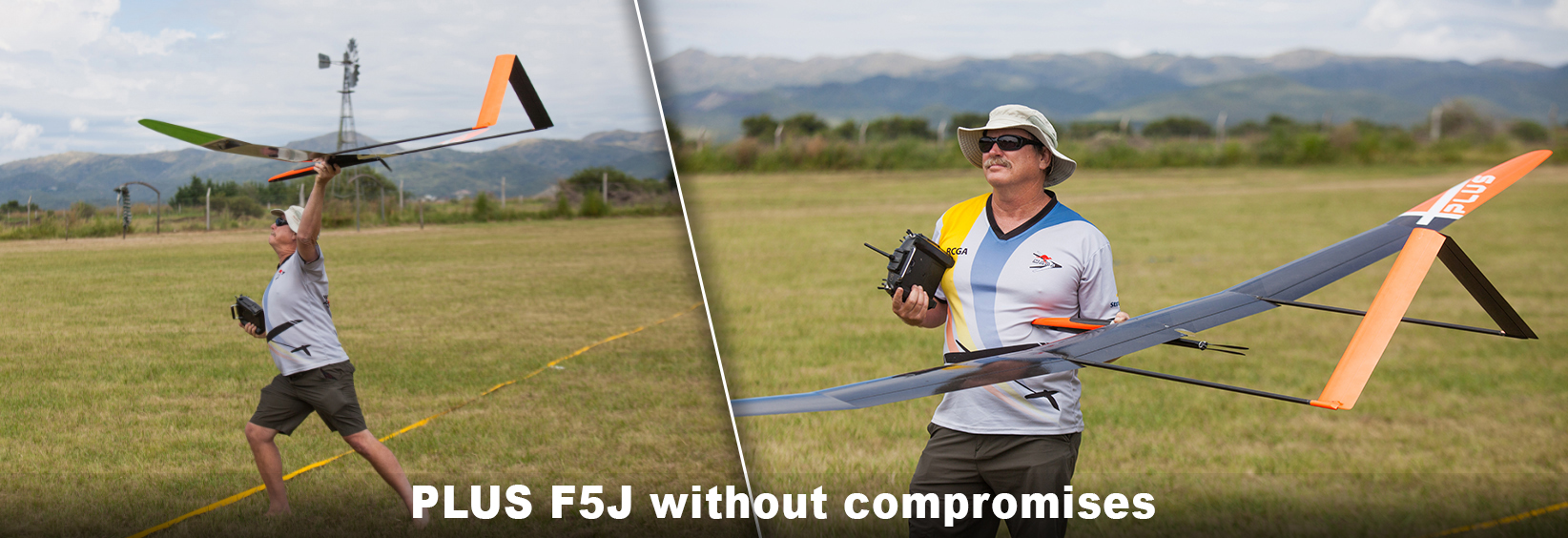
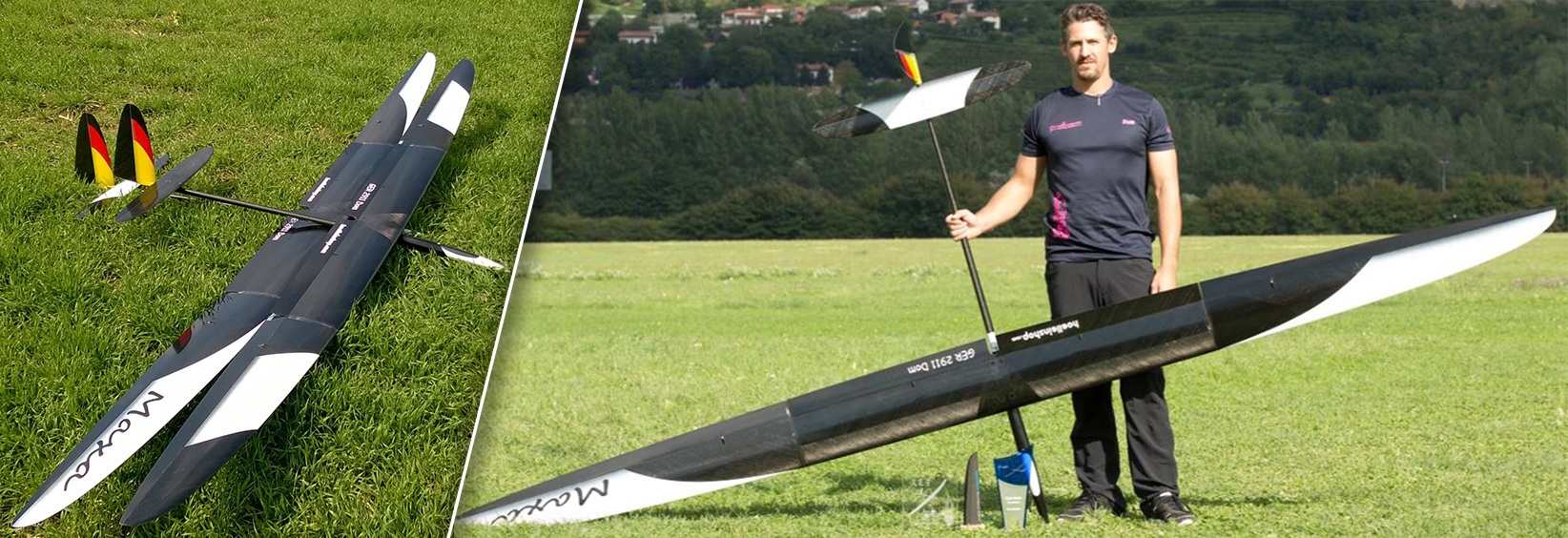
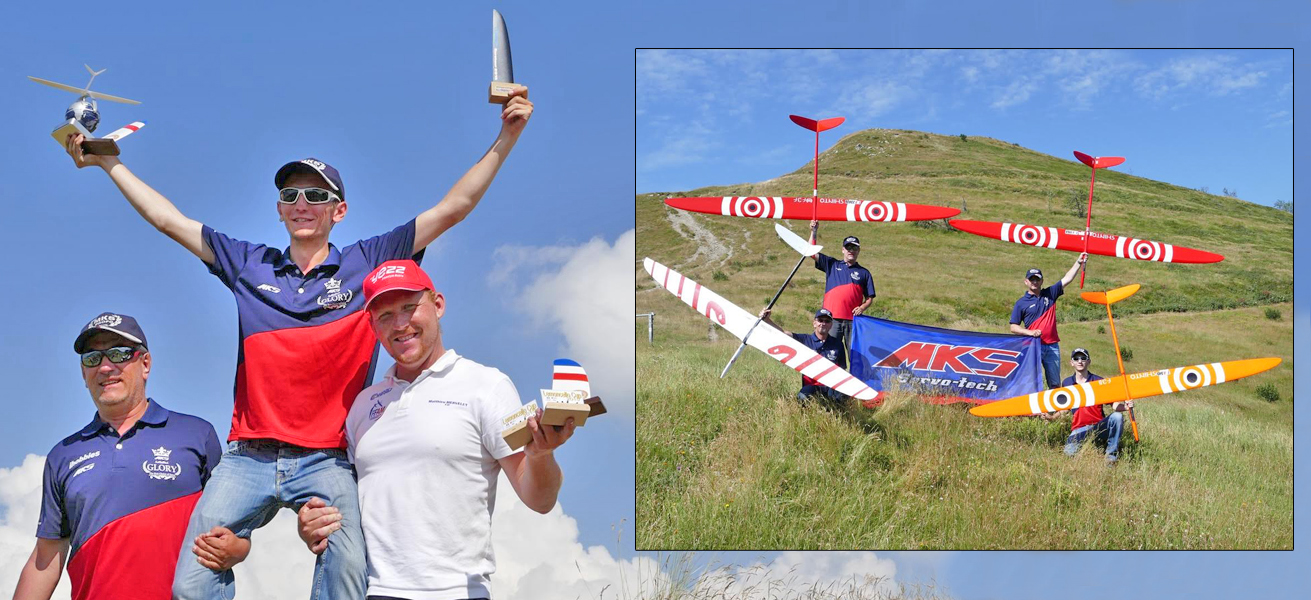


 Top
Top
